What's in a "Top 100 Photos of the Year" List?
TIME’s Top 100 Photos of 2024 captures the year’s defining crises, from war and climate disasters to political polarization. This analysis explores what the images reveal—and what they leave out.
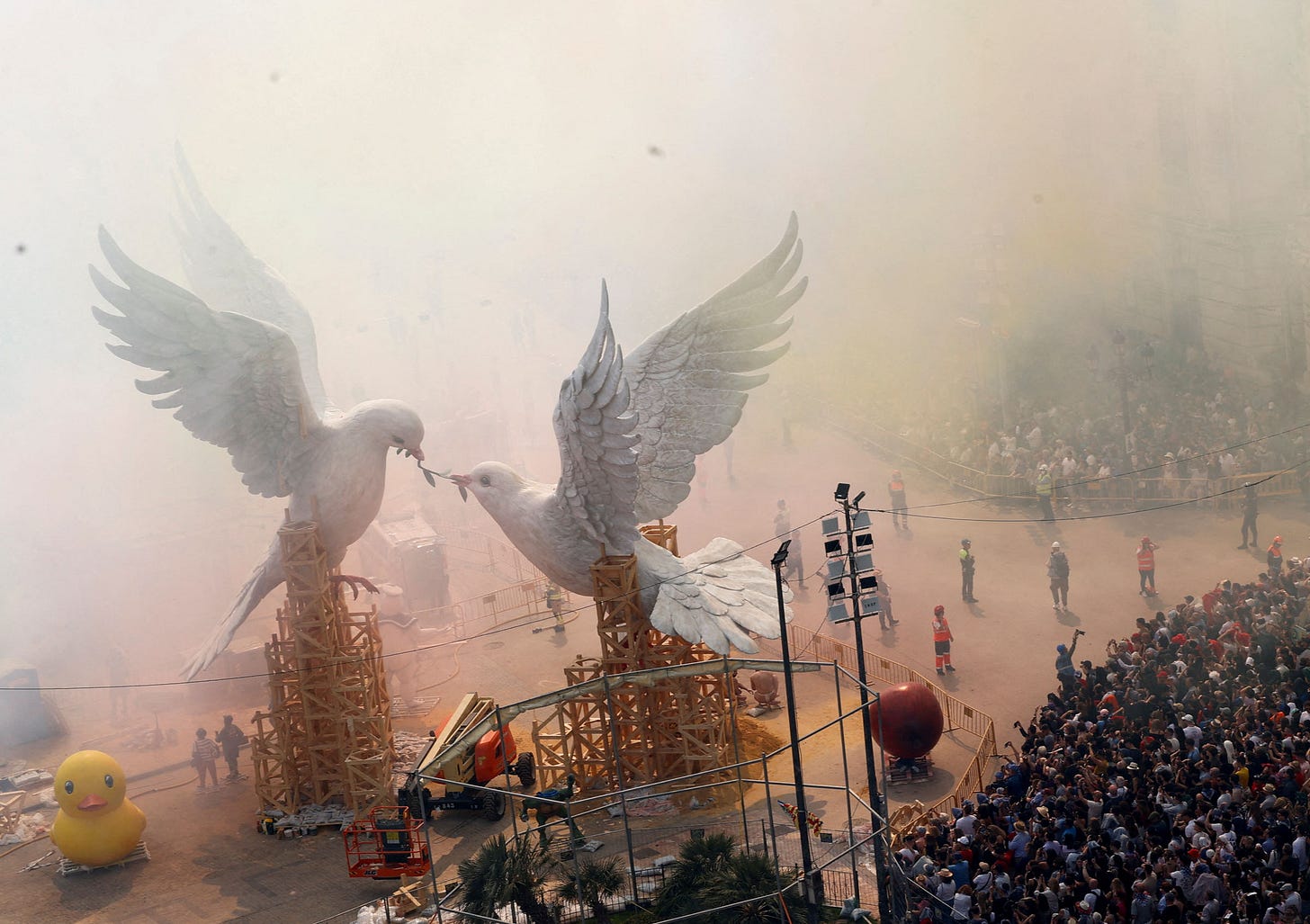
Every year-end, media organizations and news photo publishers ritually curate their choice of best images. Both poignant reminders and feasts for the eye, these vivid collections often leave me scratching my head about what they reflect overall.
My analysis looks at the makeup of TIME’s 100 Photos of the Year, focusing on news and political imagery, excluding sports, entertainment, human interest photos, and natural disasters.
While the sculpture of peace doves fighting over an olive branch fell outside the 76 relevant images I analyzed, it’s a worthy leadoff for a world of concern.
The Climate Emergency (16 Photos)
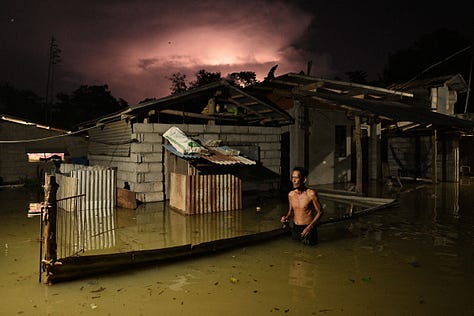
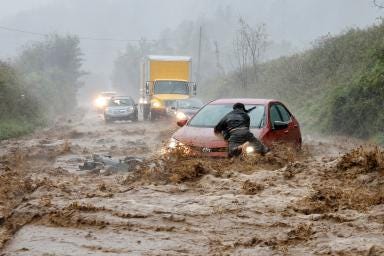
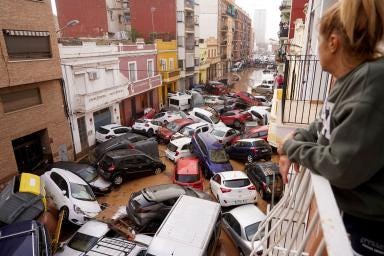
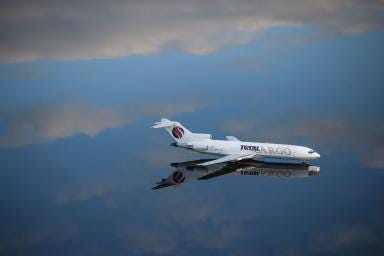
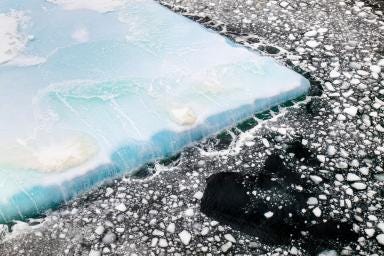
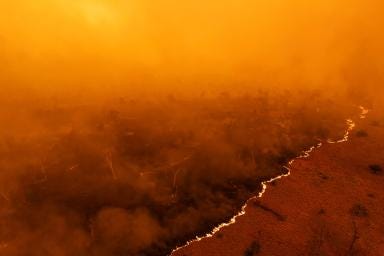
Welcome to the elephant in the room. Persistently present yet widely ignored, the climate emergency is the greatest existential threat to humanity.
Give TIME credit for the coverage highlighting a range of impacts, from immediate disasters to system collapse. The imagery balances personal stories, environmental damage, and ecosystem-scale effects. A resident wading through Typhoon Toraji’s unimaginable flooding in the Philippines and a woman surveying the so-named “car soup” from her balcony in Valencia personalize the crisis. In contrast, systemic issues like ice shelf melting in West Antarctica and fires consuming Brazil’s Pantanal wetlands illustrate broader ecological breakdown.
Lethality is one of the most understandable ways to scale climate impact. By that measure, Typhoon Yagi in the Philippines is this year's most significant global warming-charged catastrophe by far (844 deaths). By comparison, Hurricane Helene in the Caribbean and the U.S., the flooding in Spain, and the flooding in Brazil each accounted for a third as many fatalities.
Meanwhile, an estimated 47,000 people died in Europe alone due to extreme heat and humidity in 2024, over 1,300 just from the pilgrimage to the Hajj in Mecca. And yet, Hurricane Helene was featured in five of the 16 images. At the same time, critical phenomena such as heat waves and drought—among the most devastating climate effects in the U.S. and elsewhere—were absent from the list altogether.
Climate denial and how the media becomes preoccupied with or lightly touches on these cataclysmic effects brings us to an image from Viña del Mar, Chile, that says everything about humanity’s detachment from the crisis and its escalation.
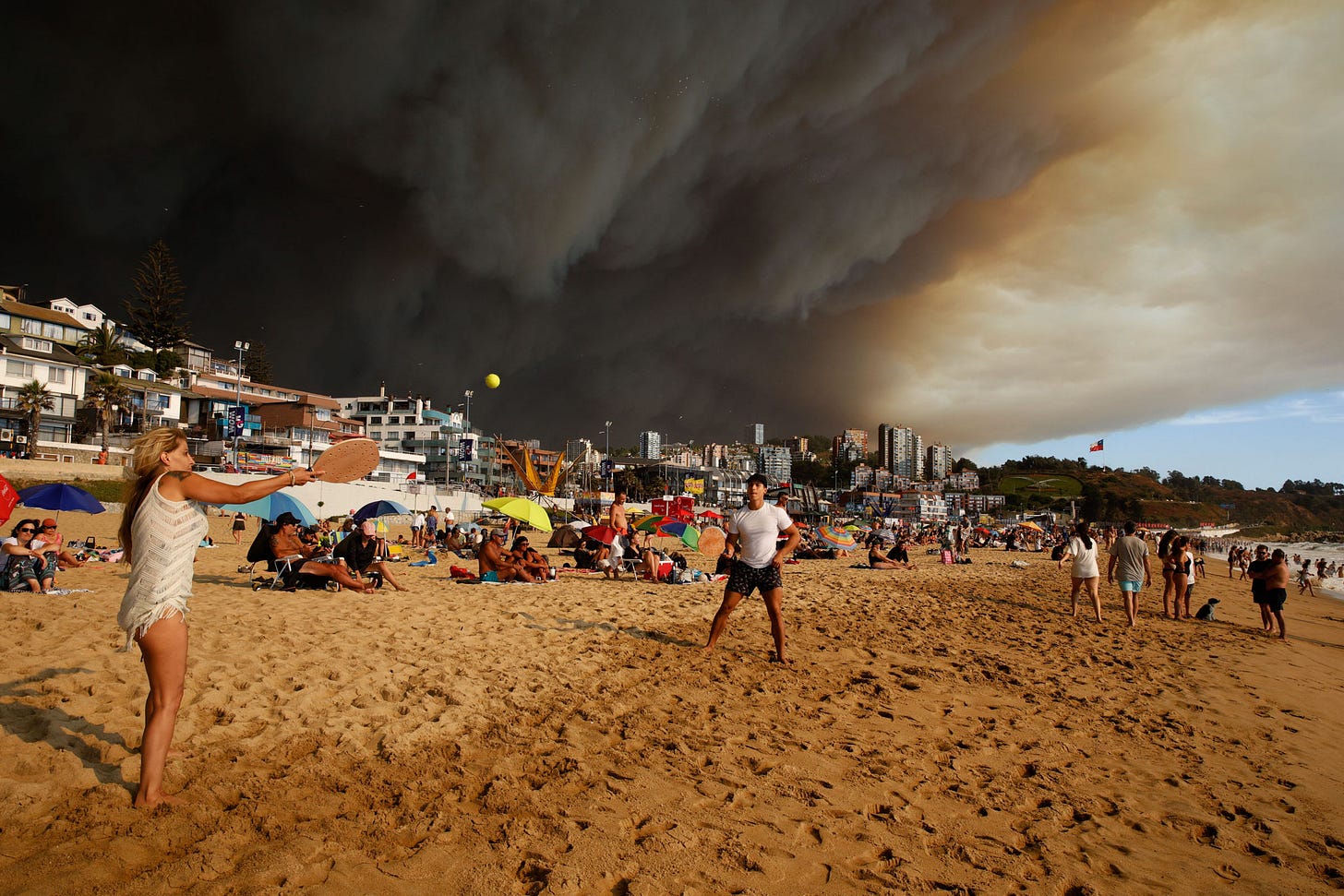
It is a stark reminder of our collective failure to confront the climate emergency head-on, even as its effects are impossible to ignore.
Israel-Gaza War (14 Photos)
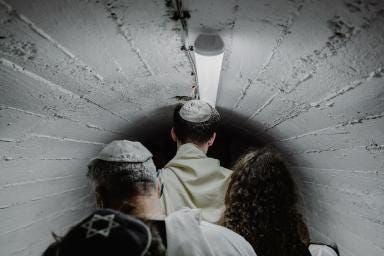
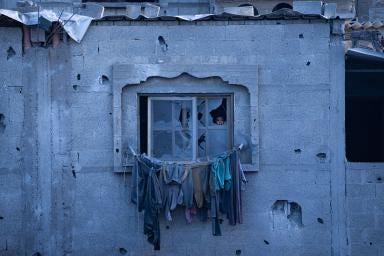

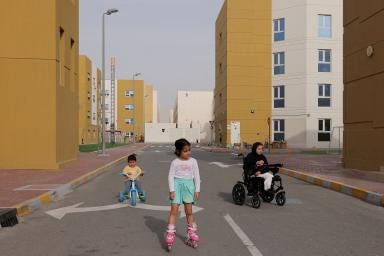
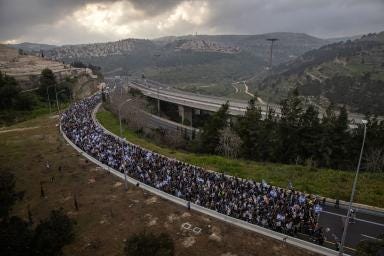
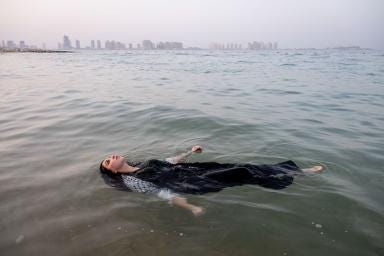
With 14 photos plus eight related protest images, the Israel - Gaza war constitutes nearly 30% of TIME's 76 news and political selections.
Perhaps the most notable aspect of the list, however, is how the visual distribution breaks from the typical media "bothsideism," in which articles and photo galleries often show equal numbers of images per side. In TIME’s list, nine photos depict Palestinian or Lebanese losses, and five focus on Israeli impacts, reflecting the asymmetric nature of the conflict and the tens of thousands of Palestinians killed and the hundreds of thousands displaced.
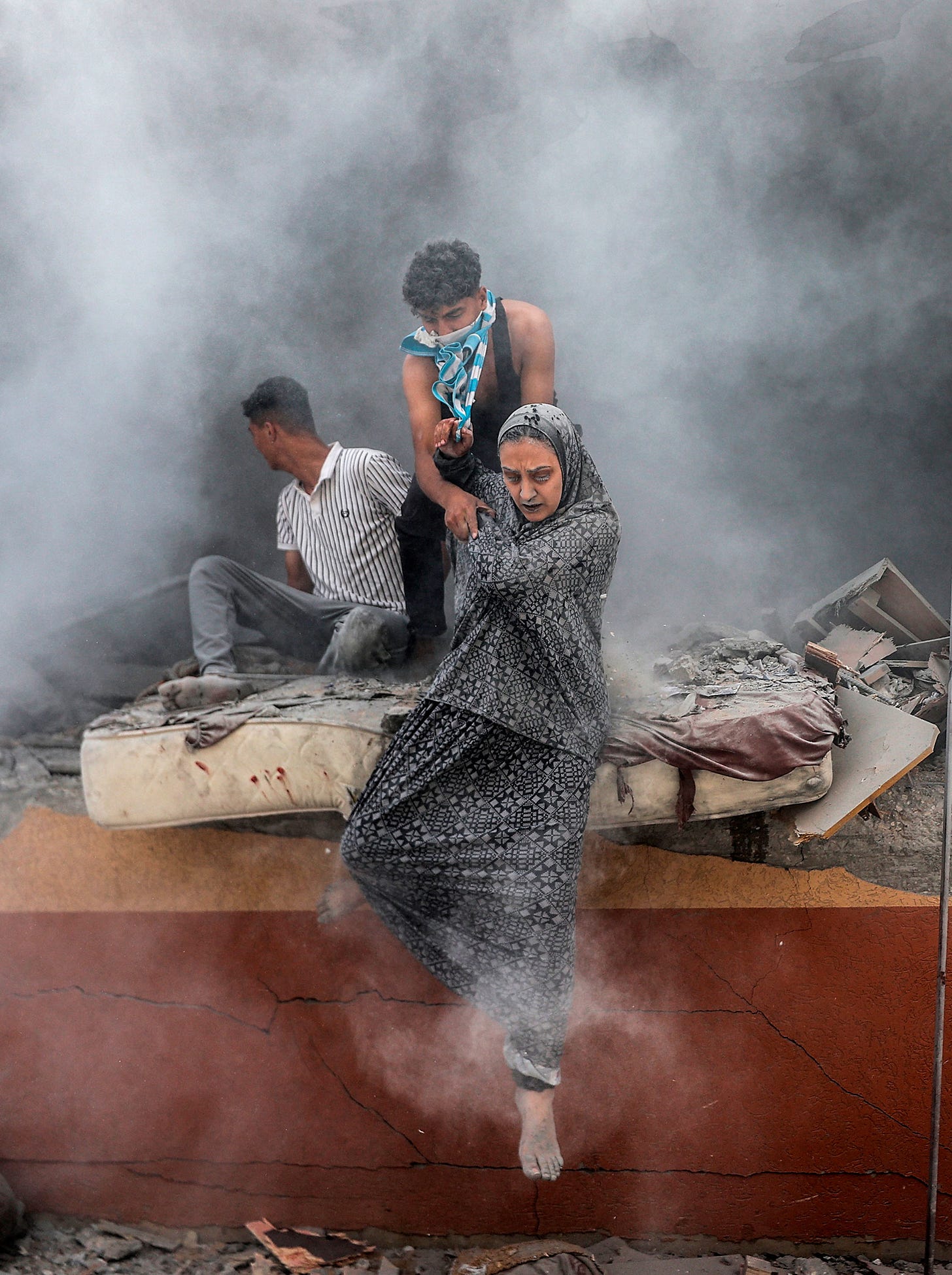
This particularly haunting scene, punctuated by the fog pouring from the rubble and the woman’s face covered in ash, symbolizes how the Gazans have become like ghosts. And the raft-like mattress conjures a voyage of the damned.
The Presidency and the U.S. Campaign (12 Photos)
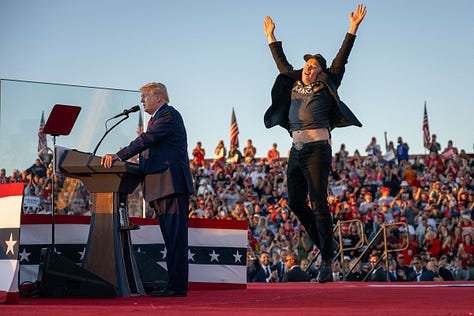
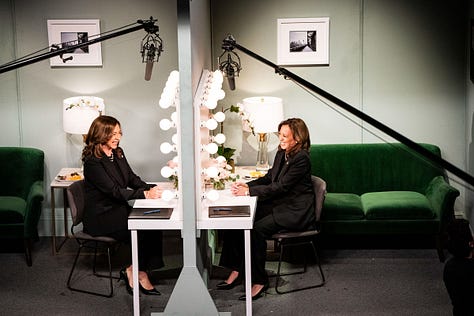
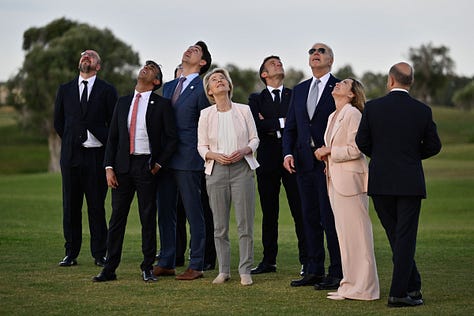
The fact the images skew to the theatrical (Elon’s reverie; Harris on SNL; a goofy pic including Biden at a G7 summit) explains the thumbnails here.
More accurately, of the twelve images (Trump 6, Biden 3, Harris 3), the Harris images suggest legitimacy-building through political gravitas and relatable appeal. The Trump images are a more theatrical blend centered on conflict and resilience, populism, and defiance. Biden's visual treatment implies diminishing influence through distance or removal.
Quantitatively, I can understand the smaller number of photos of Harris, given her late entry into the presidential race. Just three for Biden, election year or not, is a flashing red light. In seeking out reasons, one can argue for diminished capacity, but Biden also proved a terrible communicator, especially a visual one, for the entire four years.
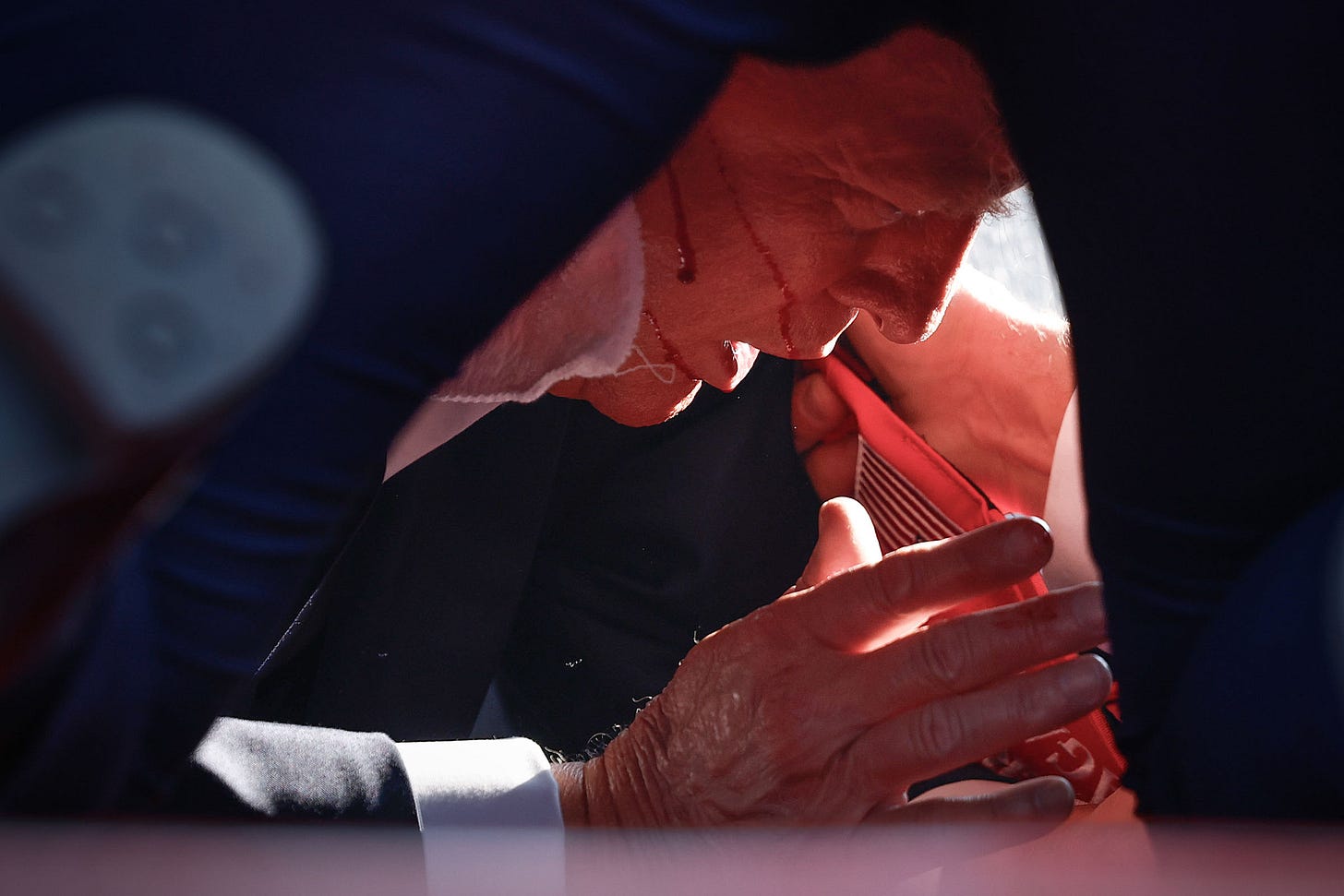
In July, I wrote about how Trump stage-managed the assassination attempt and how the media colluded with him to elevate the most heroic vision of the event. The viral and celebrated photo of a bloody Trump waving his fist in front of the flag is in the TIME edit. Here, however, I’m presenting Anna Moneymaker’s version of a stricken candidate that, in a normal world, would have been the most telling of what went down.
Protest (10 Photos)
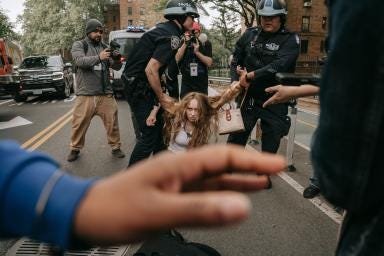
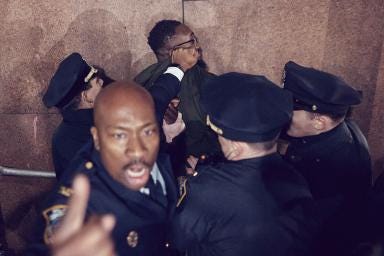
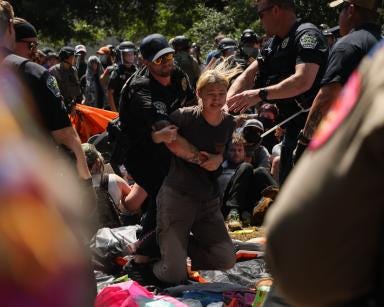
Five of the nine protest images in TIME’s list deal with pro-Palestinian protests—three showcase confrontation, chaos, or violence.
Did the Israel-Gaza war dominate social uprisings in 2024, or was the movement—particularly on college campuses—an overwhelming draw for the media and visual journalism? What the list overlooks, just like the coverage last spring, is that the overwhelming majority of protests, especially on college campuses, were peaceful.
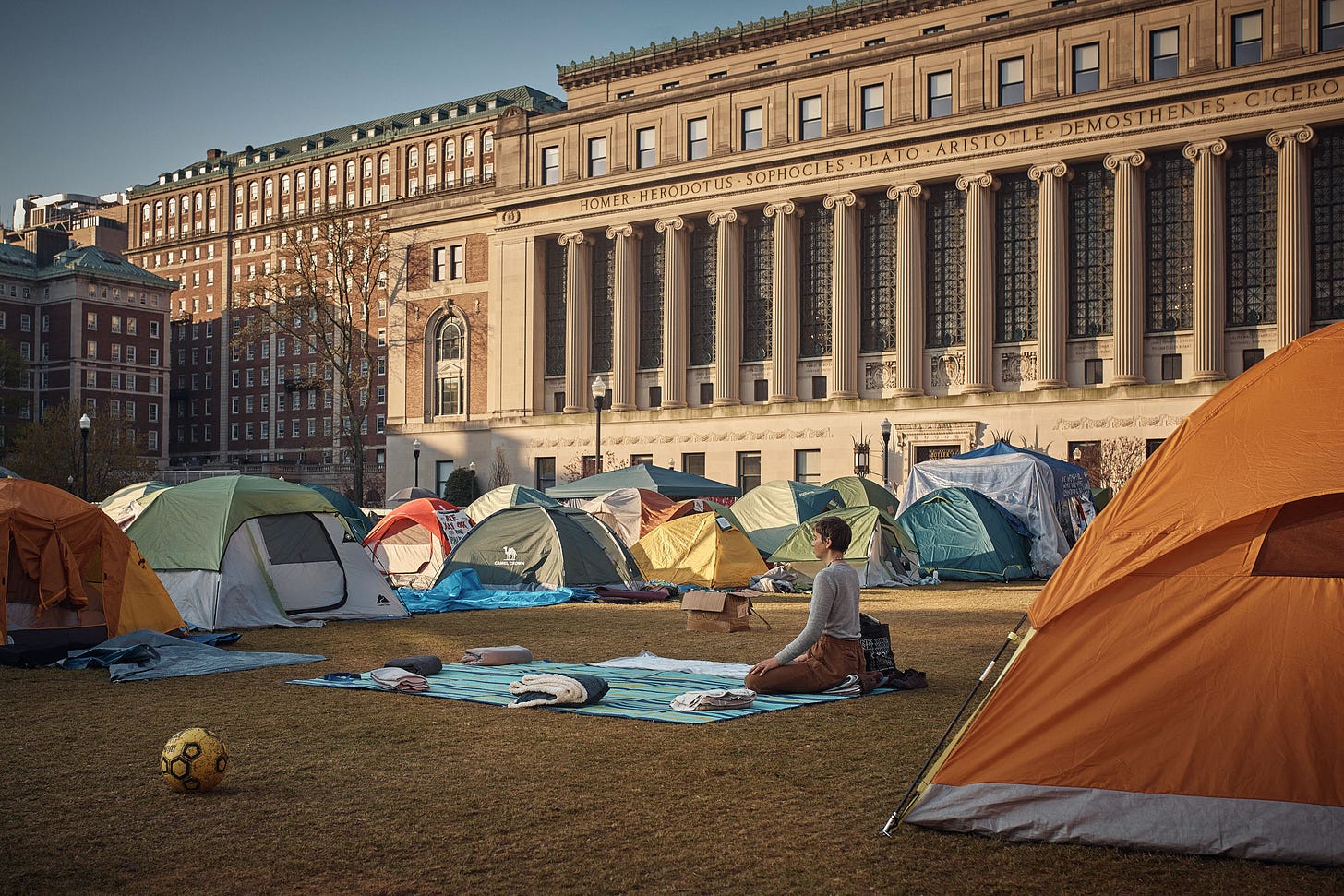
This photo from Columbia University is also worth mentioning for its aesthetics—a factor that becomes a concern whenever an image's situation, tone, or allure fails to align with the fundamental nature of the news event. In the case of the protest photo, the warm, golden light and soft hues lend the picture an undeniable beauty, casting a tranquil glow over the pro-Palestinian encampment.
The meditative figure in the foreground and the nearby soccer ball, framed by the orderly rows of tents and Butler Library's imposing classical facade, create a sedate, almost tranquilized scene. Yet this aesthetic—the meditator set against a backdrop of philosopher’s names etched in stone, figures who evoke a legacy of speaking truth to power—stands in stark contrast to the tension of the defiance and the violent institutional backlash that roiled the institution.
Russia-Ukraine War (9 Photos)
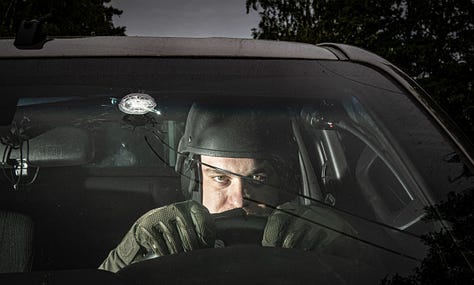

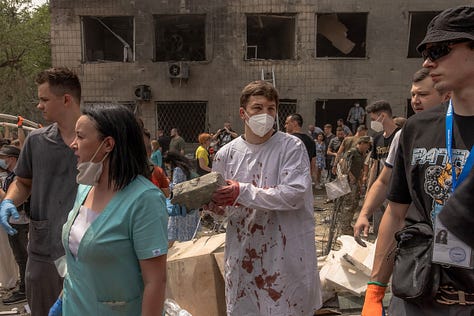
While American interest in the war has waned after its first year, TIME’s selections underscore the enduring power of conflict photography and its role in shaping public perception.
From an emergency worker evacuating civilians in a heavily shelled town to volunteers clearing rubble at a children’s hospital, the images prioritize human suffering and resilience over strategic developments. This focus aligns with TIME’s esteemed tradition of war photography, which seeks to humanize conflict and maintain attention on crises that might otherwise fade from view.
At the same time, it highlights the challenges inherent in editorial photography today. The reliance on dramatic, emotionally charged images risks contributing to visual fatigue, as audiences are inundated with similar scenes of destruction and despair.
Immigration/Refugee Crisis (7 Photos)
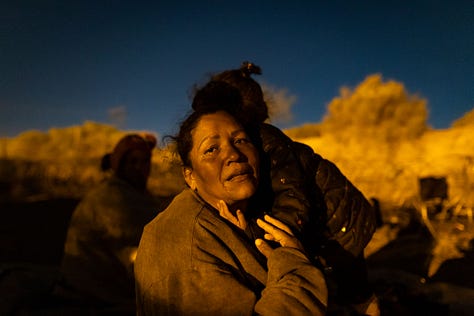
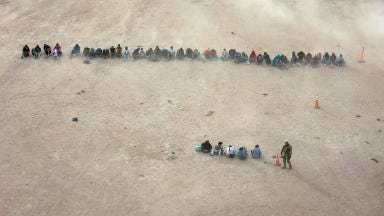
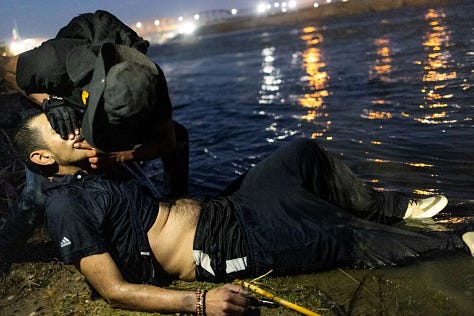
TIME’s immigration coverage includes seven images, six focusing on U.S. immigration and five specifically depicting scenes at the U.S.-Mexico border. The edit underscores the intense visual and political focus on America’s southern border while overlooking the broader dimensions of domestic and global migration crises.
While these photos dramatically capture migrants confronting physical barriers and perilous crossings, they overlook crucial dimensions of the immigration story: the contributions of the migrant workforce, systemic causes of migration, support systems within communities, and political grandstanding. With just one image from Chad representing global migration, the selection inadvertently mirrors and reinforces America’s reductive border security narrative while neglecting the complex realities of human movement worldwide.
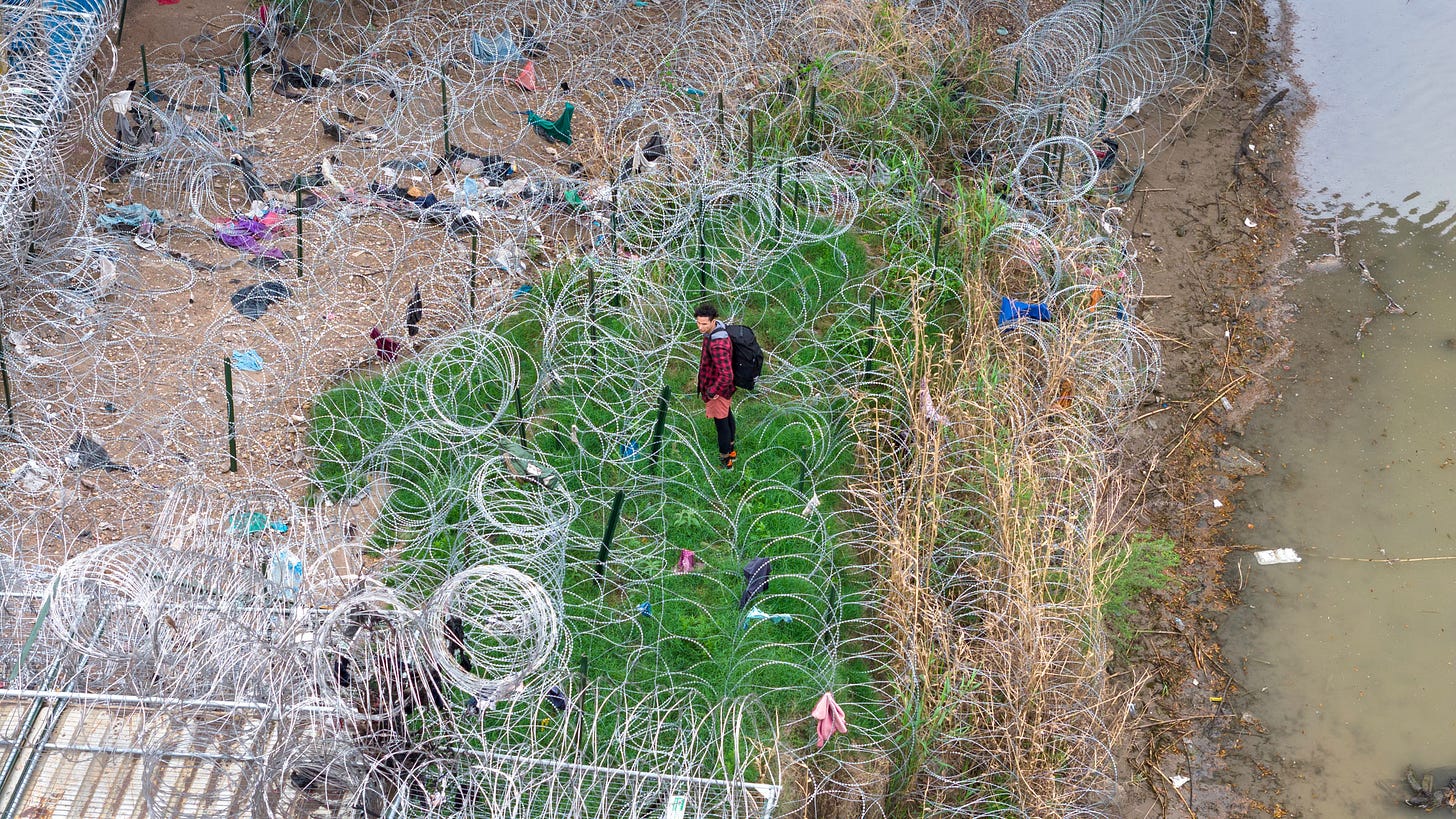
John Moore’s image of a migrant ensnared in coils of razor wire starkly captures the complexity and chaos of the immigration issue. The controversial barrier, installed by the state of Texas in Eagle Pass and later challenged in the Supreme Court, is a potent metaphor for the obstruction of progress and defiance of logic.
Women’s Rights, Equality, and Reproductive Freedom (3 Photos)
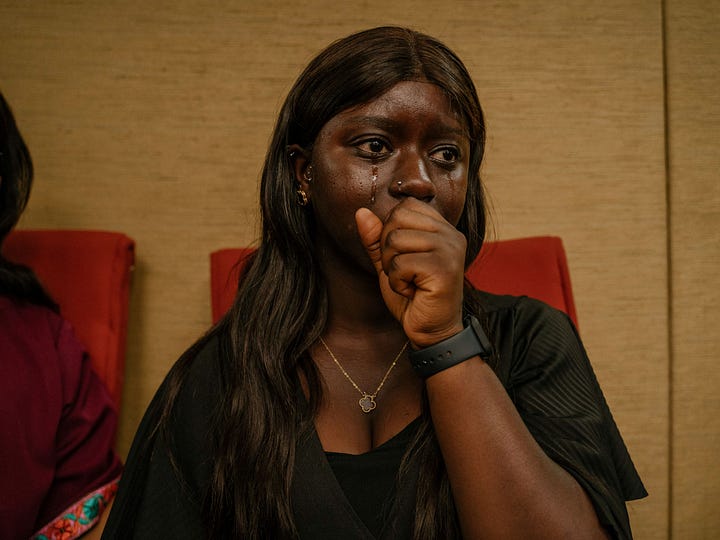
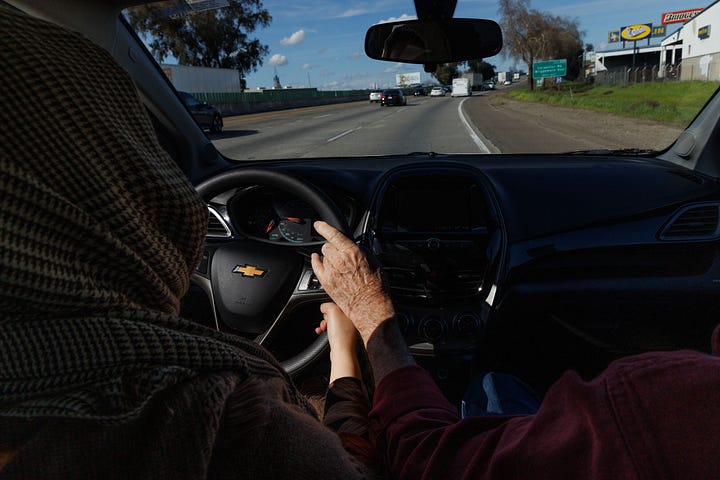
I’m at a loss to understand how few images make up this category unless the relative lack of concern for women’s rights in 2024 is the big takeaway. While the Trump-Harris contest turned into a gender war battle and a record-breaking ten states had abortion-related initiatives on their ballots in November, you would never know it.
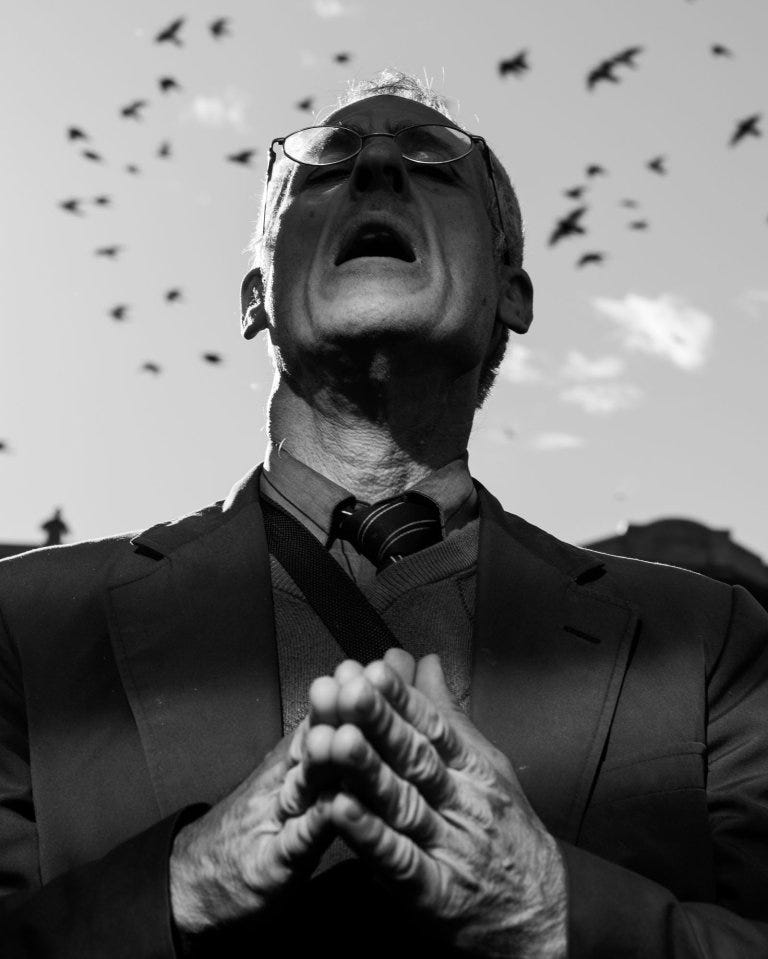
I counted this image of a man at an anti-abortion march in the protest category. Still, I’m sharing it here because it highlights the lack of any other image in the 100 photos dealing with abortion or reproductive rights.
I would add that a quick tally shows that only about 25% of TIME’s list this year—a consistent finding across media lists year after year—features images taken by women photographers.

What these selections are notable for is their documentary focus, offering a more profound treatment of women and culture. The third image, for example, is from an excellent set of photos by Dina Litovsky illustrating a NY Times Magazine exposé of the cheerleading organization Varsity Spirit, the exploitation leading to physical and financial harm to young women and their families across the country.
Social Violence and Domestic Terror (3 Photos)


Of the three images referencing terror or acts of violence short of war, one addresses gun violence in America—a critical inclusion given the staggering toll it has taken in 2024. According to the Gun Violence Archive, there have been over 2,470 mass shootings this year, resulting in more than 115,000 deaths and 129,000 injuries, with firearms now the leading cause of death among children and teens in the U.S.
While the photo from Kansas City effectively conveys the fear and unpredictability of gun violence, it feels insufficient, given the magnitude of this crisis. Incidentally, the image of a vigil in England for the victim of a knife attack only makes the treatment of gun violence in America more cursory.
Poverty (2 Photos)
This category includes only two photos, the other from Fiji. Although an eloquent image and the rare scene of Native Americans, especially on their land, the lack of coverage says a lot about both the media and cultural status of the issue. That’s even more ironic after this year’s Supreme Court decision banning homeless people from sleeping outdoors and the financial profile of Donald Trump’s new administration, including at least eight confirmed billionaires with a combined net worth of over $344.4B.
A Last Word
Ultimately, TIME’s Top 100 Photos of 2024, like most of these yearly compendiums, provides a compelling yet incomplete visual chronicle of the year. Topics that were absent include physical and mental healthcare and substance abuse, the impact of tech on society, including social media and AI, labor movements and workers’ rights, environmental activism, oligarchy and plutocracy, and the growing scarcity of natural resources.
While the collection captures critical moments of conflict and challenge, the focus on visual drama and aesthetics, especially with the softer categories I skipped, risks diluting them into an exercise in infotainment. That’s not the worst thing if we are clear and specific about celebrating editorial photography. However, by leaning into its tradition of high-impact photojournalism, TIME’s list and others reinforce the role of photojournalism in raising consciousness and shaping public perception. That broader agenda raises questions about which stories are told from what angle and which remain unseen.
For the original list, see TIME’s Top 100. I’ve also attached a PDF with my category breakdowns.
Thank you for visiting Reading the Pictures. Despite our visually saturated culture, we remain among the few sources for analyzing news photography and media images. This post is public, so feel free to share it.
To receive new posts and support our work, consider becoming a free or paid subscriber. Because we are a non-profit, your subscription is tax deductible.



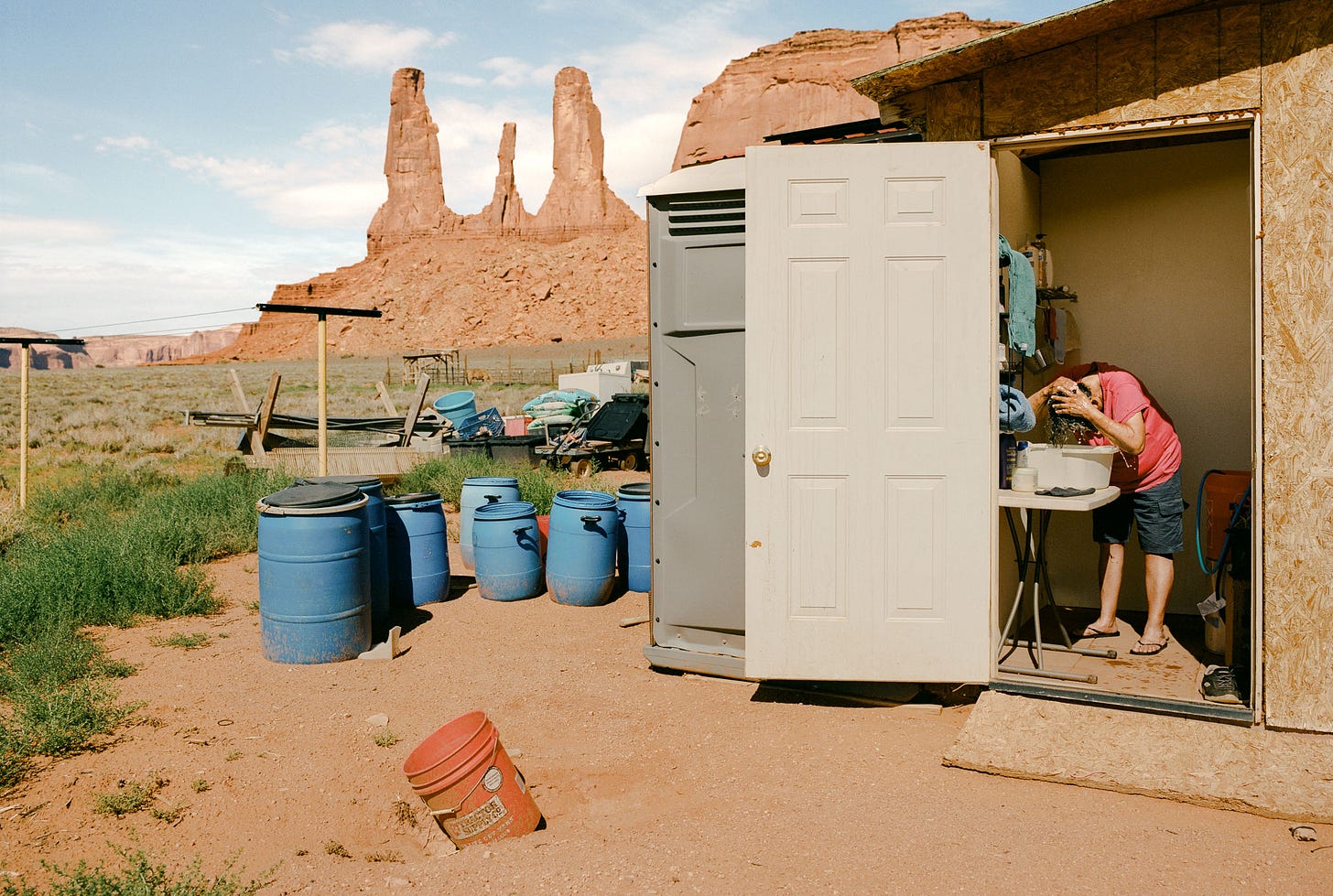
I find your comment regarding the Trump Pennsylvania photo more than a little revealing of your politics - and I say this as someone who believes Trump to be America’s Hitler. Of course he knew precisely what he was doing when he thrust his fist in the air in front of the flag - he was performing, and performing brilliantly. What else would you expect of a ‘reality’ tv performer who is more interested in images than in reality? That photo was the story. It gave him a boost, and probably finished off the election then and there. To not use that photo is to deny our current reality.